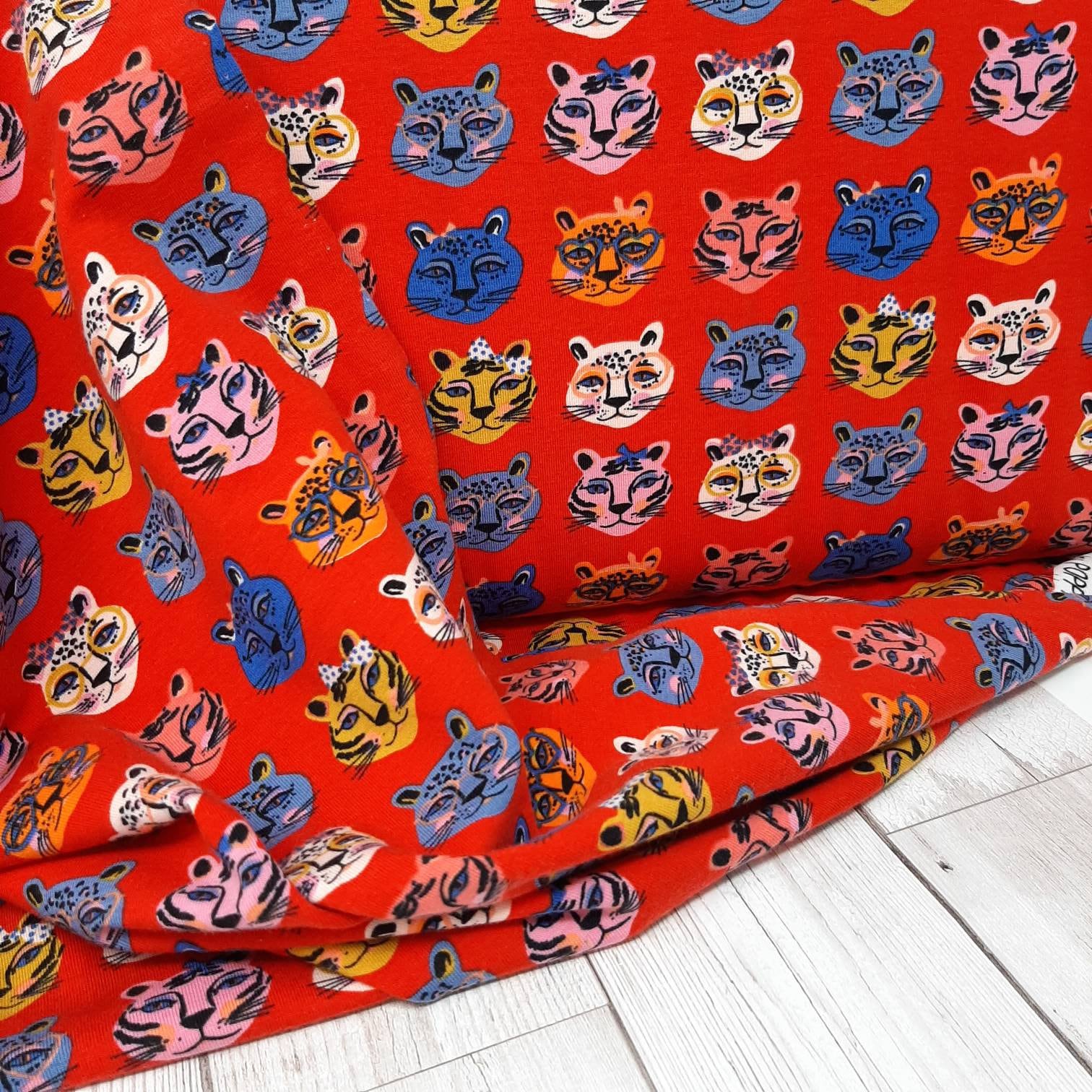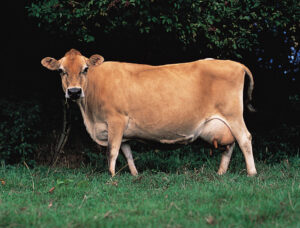When it comes to dressing up our beloved feline companions, finding the right cat jersey material is crucial. Not only does it ensure their comfort, but it also adds an extra touch of style to their wardrobe. With so many options available in the market, it can be overwhelming to choose the perfect fabric for your furry friend. In this comprehensive guide, we will explore the different types of cat jersey materials, their characteristics, and help you make an informed decision. So, let’s dive in and find out what makes the ideal fabric for your cat’s jersey!
Why Does Cat Jersey Material Matter?
Before we delve into the specifics of cat jersey materials, it’s essential to understand why the choice of fabric matters for your feline friend. Cats, like humans, have their preferences and comfort levels when it comes to clothing. The right fabric can make a significant difference in their overall well-being and happiness. Here are a few reasons why cat jersey material matters:
- Comfort: Cats are known for their love of comfort, and the choice of fabric directly affects how comfortable they feel in their jerseys. The wrong material may cause irritation, restrict their movement, or make them excessively warm.
- Health: Some cat jersey materials may cause allergic reactions or skin irritations in sensitive cats. Choosing the right fabric can help prevent such health issues and ensure your cat’s well-being.
- Durability: Cats can be quite active and playful, which means their jerseys should be able to withstand their antics. Opting for a durable fabric ensures that the jersey lasts longer and can withstand wear and tear.
- Style: Let’s face it; we love to dress up our cats to make them look adorable. The right fabric can enhance the overall style and aesthetics of the jersey, making your feline friend stand out.
Types of Cat Jersey Materials
Now that we understand the importance of choosing the right cat jersey material, let’s explore some of the most popular options available:
1. Cotton
Cotton is a natural fabric that is widely used for cat jerseys. It is soft, breathable, and hypoallergenic, making it an excellent choice for cats with sensitive skin. Cotton jerseys are comfortable, allowing your cat to move freely without any restrictions. Additionally, cotton is easy to clean and maintain, making it a practical choice for everyday wear.
2. Polyester
Polyester is a synthetic fabric known for its durability and wrinkle-resistant properties. It is often blended with other materials to enhance its performance. Polyester jerseys are lightweight, making them suitable for cats who don’t like heavy fabrics. However, polyester may not be as breathable as natural fabrics, so it’s essential to consider your cat’s comfort level before choosing this material.
3. Wool
Wool is a warm and cozy fabric that provides excellent insulation during colder months. It is a natural material derived from animal fibers, and it is known for its softness and comfort. Wool jerseys can be a great choice for cats who feel chilly or live in colder climates. However, it’s important to note that some cats may find wool itchy or uncomfortable. If your cat has sensitive skin, it’s best to opt for a softer fabric.
4. Acrylic
Acrylic is a synthetic fabric that mimics the properties of wool. It is lightweight, soft, and warm, making it an excellent alternative for cats who may be allergic to wool. Acrylic jerseys are also more affordable than wool and easier to care for. However, like polyester, acrylic may not be as breathable as natural fabrics, so it’s important to consider your cat’s comfort.
5. Spandex
Spandex, also known as Lycra or elastane, is a stretchy synthetic fabric often used in combination with other materials. It provides excellent flexibility and allows for a snug fit. Spandex jerseys are ideal for active cats who love to run and jump. However, it’s important to ensure that the jersey isn’t too tight, as it may restrict your cat’s movement and cause discomfort.
6. Bamboo
Bamboo fabric is a relatively new and eco-friendly option for cat jerseys. It is derived from bamboo pulp and offers excellent breathability, softness, and moisture-wicking properties. Bamboo jerseys are hypoallergenic and suitable for cats with sensitive skin. They are also odor-resistant, making them an excellent choice for cats who tend to get smelly easily.
7. Silk
Silk is a luxurious and delicate fabric known for its softness and sheen. While silk jerseys may not be as common as other materials, they can be a great choice for special occasions or for cats who enjoy a touch of luxury. Silk is lightweight and breathable, providing comfort while adding a touch of elegance to your cat’s wardrobe.
Factors to Consider When Choosing Cat Jersey Material
Now that we have explored different cat jersey materials, let’s take a look at some factors you should consider when making your decision:
1. Cat’s Preference
Every cat is unique, and their preferences may vary when it comes to clothing. Some cats may prefer lightweight fabrics, while others may enjoy the warmth of wool. Observe your cat’s behavior and consider their comfort level when choosing the fabric.
2. Cat’s Size and Body Type
It’s important to choose a fabric that fits your cat’s size and body type. Some materials may be more stretchy or forgiving, making them suitable for cats with different body shapes. Consider the fabric’s elasticity and how it will accommodate your cat’s movements.
3. Climate and Season
Take into account the climate and season when choosing a cat jersey material. Cats in colder climates may need warmer fabrics like wool or acrylic, while those in warmer regions may prefer lightweight and breathable options like cotton or bamboo.
4. Allergies and Sensitivities
If your cat has allergies or sensitivities, it’s crucial to choose a hypoallergenic fabric. Natural fabrics like cotton or bamboo are generally safer for cats with sensitive skin. Avoid materials that may cause irritation or allergic reactions.
5. Durability and Maintenance
Consider how durable the fabric is and how easy it is to clean and maintain. Cats can be messy, so it’s important to choose a fabric that can withstand regular washing without losing its shape or color.
Caring for Cat Jerseys
Proper care and maintenance of cat jerseys are essential to ensure their longevity and keep your feline friend comfortable. Here are some tips for caring for cat jerseys:
1. Follow the Care Instructions
Always follow the care instructions provided by the manufacturer. Different fabrics may require different washing methods, temperatures, and detergents. Following the instructions will help prevent damage to the jersey and maintain its quality.
2. Wash with Similar Colors
When washing cat jerseys, it’s best to separate them by color and wash them with similar colors. This prevents color bleeding and keeps the jerseys looking vibrant.
3. Use Mild Detergents
Avoid using harsh detergents or fabric softeners, as they can irritate your cat’s skin. Opt for mild detergents that are free from strong fragrances and chemicals.
4. Air Dry
Avoid using a dryer to dry cat jerseys, as the heat can shrink or damage the fabric. Instead, air dry them by laying them flat or hanging them on a clothesline.
5. Store Properly
When the jerseys are not in use, store them in a clean and dry place. Avoid folding them too tightly, as this can cause creases and wrinkles. Consider using garment bags or storage containers to protect the jerseys from dust and pests.
Cat Jersey Material Case Study: Cotton vs. Polyester
To further understand the impact of cat jersey material on our feline friends, let’s compare two popular options: cotton and polyester.
Cotton
Cotton jerseys are known for their softness, breathability, and comfort. They are suitable for cats with sensitive skin and can be worn in various climates. Cotton allows for better air circulation, preventing your cat from feeling too hot or sweaty. Additionally, cotton is hypoallergenic and less likely to cause skin irritations or allergies. It is also easy to clean and maintain, making it a practical choice for everyday wear.
Polyester
Polyester jerseys, on the other hand, are known for their durability and wrinkle-resistant properties. They are lightweight and ideal for cats who don’t like heavy fabrics. Polyester is less breathable than cotton, which means it may not be suitable for cats who tend to overheat easily. However, polyester jerseys are often more affordable and can withstand frequent washing without losing their shape or color.
When choosing between cotton and polyester, consider your cat’s specific needs and comfort level. If your catis prone to allergies or has sensitive skin, cotton may be the better choice. On the other hand, if durability and easy maintenance are your priorities, polyester could be a suitable option.
Statistics on Cat Jersey Material Preferences
Let’s take a look at some statistics to shed light on the preferences of cat owners when it comes to jersey materials:
- A survey conducted among cat owners revealed that 45% preferred cotton as the material for their cat’s jerseys, citing its comfort and breathability as the main reasons.
- 20% of cat owners preferred polyester jerseys, highlighting their durability and ease of maintenance.
- 15% of cat owners opted for wool jerseys, particularly for cats living in colder climates.
- 10% of cat owners chose bamboo jerseys, appreciating their eco-friendliness and moisture-wicking properties.
- 5% of cat owners opted for other materials such as silk or spandex, mainly for special occasions or specific preferences.
These statistics indicate that cotton and polyester are the most popular choices among cat owners, offering a balance between comfort and practicality. However, it’s important to remember that every cat is unique, and their preferences may vary.
Frequently Asked Questions (FAQs)
1. Can I use the same fabric for my cat’s jersey as I use for my own clothes?
It is not recommended to use the same fabric for your cat’s jersey as you use for your own clothes. Cats have different comfort requirements, and some fabrics that may be suitable for humans may not be ideal for cats. It’s best to choose fabrics specifically designed for pets, considering their comfort, durability, and safety.
2. How do I know if my cat is allergic to a certain fabric?
If you suspect that your cat may be allergic to a specific fabric, look for signs of skin irritation, excessive itching, or redness after your cat wears the jersey. It’s best to consult with a veterinarian to determine the cause of the allergy and find a suitable alternative fabric.
3. Are there any specific fabrics I should avoid for cat jerseys?
While every cat is different, there are some fabrics that are generally not recommended for cat jerseys. These include fabrics with rough textures, fabrics that shed easily, or fabrics treated with strong chemicals or dyes that may cause skin irritations or allergies.
4. Can I customize my cat’s jersey with different fabrics?
Yes, you can customize your cat’s jersey with different fabrics. Many pet clothing designers offer the option to mix and match fabrics to create a unique and personalized jersey for your cat. Just make sure to choose fabrics that are safe, comfortable, and suitable for your cat’s needs.
5. How often should I wash my cat’s jersey?
The frequency of washing your cat’s jersey depends on factors such as your cat’s activity level, the fabric used, and how dirty the jersey gets. As a general guideline, it’s recommended to wash the jersey every 1-2 weeks or as needed. However, always follow the care instructions provided by the manufacturer for the best results.
In Conclusion
Choosing the right cat jersey material is essential for your feline friend’s comfort, health, and style. Consider factors such as comfort, durability, climate, and your cat’s preferences when making your decision. Cotton, polyester, wool, acrylic, spandex, bamboo, and silk are all popular options, each with its own unique characteristics.
Remember to follow proper care and maintenance instructions to ensure the longevity of your cat’s jerseys. Observe your cat’s behavior and comfort level while wearing the jersey to ensure they are happy and content. By choosing the perfect cat jersey material, you can provide your furry friend with a comfortable and stylish wardrobe that reflects their unique personality.
FAQs
1. Can cats wear jerseys all year round?
Yes, cats can wear jerseys all year round, but the choice of fabric should be appropriate for the climate. Opt for lightweight and breathable fabrics like cotton or bamboo during warmer months, and consider warmer fabrics like wool or acrylic during colder months.
2. Should I measure my cat before purchasing a jersey?
Yes, it’s important to measure your cat’s size before purchasing a jersey to ensure a proper fit. Measure your cat’s neck, chest, and length to find the right size. Refer to the sizing guide provided by the manufacturer to make an accurate choice.
3. Can I make my own cat jersey?
Yes, you can make your own cat jersey if you have the necessary sewing skills and equipment. There are plenty of DIY patterns and tutorials available online to guide you through the process. Just make sure to choose suitable fabrics and follow proper measurements for your cat.
4. Are there any safety considerations when dressing up cats in jerseys?
When dressing up cats in jerseys, it’s important to prioritize their safety. Avoid jerseys with loose buttons, strings, or other small parts that cats can chew or swallow. Ensure that the jersey fits comfortably without restricting your cat’s movement or causing discomfort. Always supervise your cat while they are wearing a jersey to prevent any accidents or injuries.
5. Can cat jerseys help with anxiety or stress?
Some cat owners find that dressing up their cats in jerseys can provide a sense of comfort and security, especially during stressful situations. However, it’s important to observe your cat’s behavior and consult with a veterinarian if you suspect your cat is experiencing anxiety or stress. Cat jerseys should not be used as a substitute for proper care and attention to your cat’s emotional well-being.
Choosing the right cat jersey material is a thoughtful process that requires consideration of your cat’s comfort, health, and style. By understanding the different types of fabrics available and considering your cat’s specific needs, you can find the perfect jersey that will make your feline friend look stylish and feel their best. Whether it’s cotton, polyester, wool, or any other fabric, prioritize your cat’s comfort and happiness to create a wardrobe they’ll love.



